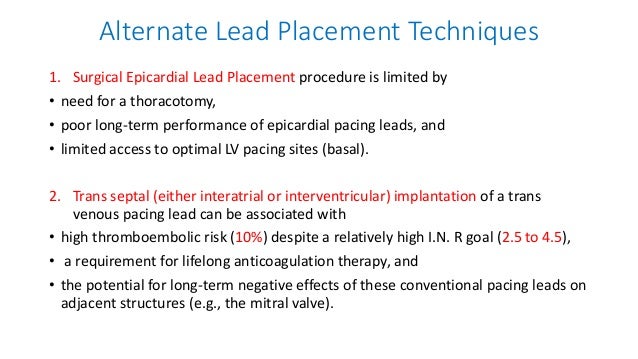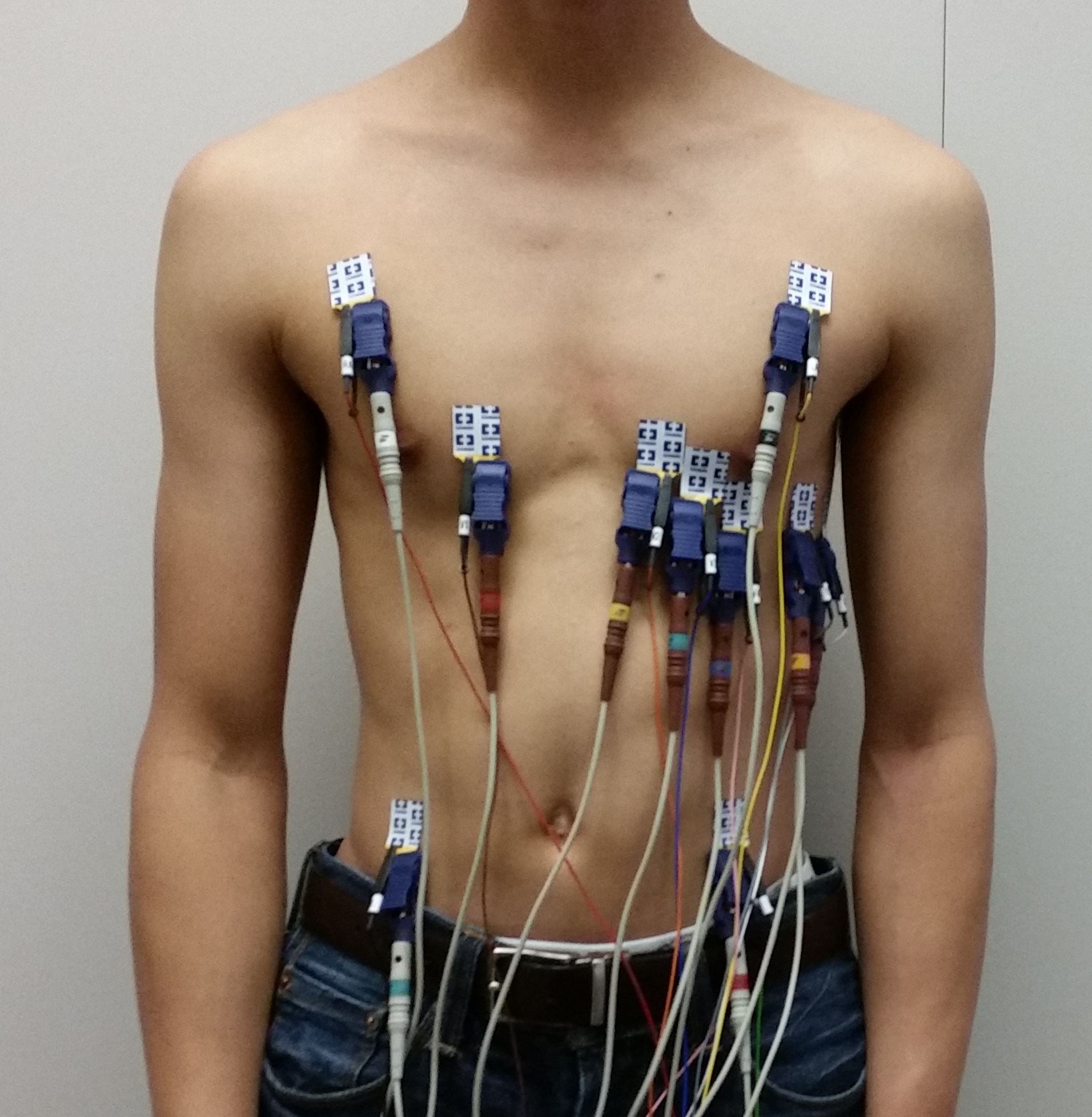




ALSYNC: LV Endocardial Pacing Could Help in CRT Nonresponse
In a 138-patient safety and efficacy study of LV endocardial-lead CRT, conducted at 16 centers in Europe and two in Canada, about two-thirds of the group showed some kind of functional or reverse ...Trans-Fontan baffle placement of an endocardial systemic ...
Trans-Fontan baffle placement of an endocardial systemic ventricular pacing lead Elizabeth DeWitt, MD, Ryan Callahan, MD, Elizabeth Blume, MD, Audrey Marshall, MD, Douglas Mah, MD From the Department of Cardiology, Boston Children’s Hospital, Harvard Medical School, Boston, Massachusetts. IntroductionLeft Ventricular Endocardial Stimulation in Patients With ...
ualized approach to both epicardial and endocardial lead placement in patients with severe ischemic car-diomyopathy who demonstrated poor response to CRT. The investigators created a 2-step protocol. First, regions of scar in the LV were delineated with an endocardial voltage map (voltage<0.5 mV), and the LV cavity was divided into 12 segments ...Aug 24, 2020 · We herein describe an unusual complication during biventricular pacemaker implant wherein the distal part of the guide sheath used for left ventricular (LV) lead placement broke during the removal stage and got retained in situ completely, with no part visible outside the body. The technique used for successful percutaneous removal of the broken sheath fragment is described.
Methods and Results— LV pressure and volume data were endocardial lv lead placement determined via conductance catheter during CRT device implantation in 10 patients. In addition to the standard epicardial CS pacing, the following endocardial LV sites were systematically assessed: the site transmural to the CS lead, the LV apex, the septal midwall, the basal lateral free wall, and the midlateral free wall.
Mar 26, 2013 · Unable to position a LV lead via the standard coronary sinus route OR; Non-responder to conventional CRT; Exclusion Criteria: Patients in whom, in the opinion of the investigators, an alternative route for LV lead placement would be safer or more effective for the patient
CASE REPORT: WiSE CRT technology ‒ a feasible and ...
The options of a right-sided approach with the left ventricular lead tunnelled across to the left-sided pocket, a full extraction and replacement of the left-sided system, a surgical epicardial LV lead placement or a WiSE CRT system were discussed with the patient, before deciding on a WiSE CRT system.Guidance for Optimal Site Selection of a Leadless Left ...
Key Words. Biventricular; CRT; endocardial; heart failure; resynchronization; Significant numbers of patients fail to respond to cardiac resynchronization (CRT) when it is delivered endocardial lv lead placement through an epicardial left ventricular (LV) lead placed via the coronary sinus .Furthermore, technical and anatomical limitations mean it is not always possible to implant an LV lead and patients upgrading from a ...Left Ventricular Endocardial Pacing Improves ...
Moreover, on a theoretical basis, endocardial lead placement endocardial lv lead placement would have the advantages that the path length for impulse conduction is shorter along the endocardium as compared with the epicardium and that conduction velocity is faster in the endocardium than in the epicardium. 2 Another reason to consider endocardial LV pacing is that ...RECENT POSTS:
- wholesale ladies handbags in chennai
- louis vuitton belt price in france
- tiny black crossbody bag
- gucci sylvie leather mini chain bag
- louis vuitton french company speedy key
- gucci canada sale 2019/2020
- louis vuitton saint laurent bags
- small coin purses for women
- fresh seafood market bay st louis
- monogram eclipse key pouch
- wholesale lv durags
- mickey mouse bag primark
- black louis vuitton onesie roblox
- louis vuitton damier azur clutch

Share your thoughts